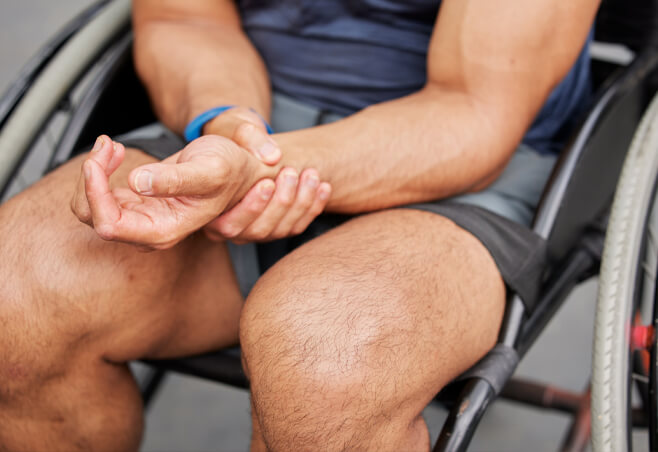WALANT hand surgery
(Wide Awake Local Anesthesia No Tourniquet)
Wide Awake Local Anesthesia No Tourniquet (WALANT) is a technique for hand and wrist surgery that uses local anesthesia. This technique offers many advantages over standard procedures including no general anesthesia and lower costs. With the appropriate operation, WALANT can be a better solution that may cost less.
About
WALANT is a new type of local anesthesia for various hand and wrist surgery procedures. Until recently, certain hand and wrist surgeries were performed using a tourniquet to control blood to improve the surgeon’s visibility of the operated area. Tourniquets, however, are uncomfortable and unpleasant for patients. In the past, this discomfort was reduced by sedating patients with general anesthetics. (General anesthetics are used to cause a patient to remain unconscious during surgery.)
WALANT eliminates the need for tourniquets and general anesthesia (sedation) by using two medications administered locally for a safe, painless surgery. Lidocaine blocks pain, and epinephrine stops bleeding. Epinephrine acts as a vasoconstrictor to control bleeding, which is why the use of tourniquets can be eliminated during the procedure. While not every hand and wrist surgery can be performed with WALANT, there are many that qualify, some of which include:
- Nerve compression
- Tendon disorders or repairs
- Carpal tunnel release
- Trigger finger release
- Finger sensory block
- Soft-tissue Finger lesions
- PIP fusions
- Thumb MCP fusions
- Collateral ligament tears of the MCP joint
- Dupuytren contractures
- Flexor tendon repairs
- Trapeziectomy or Bennett fracture
- Metacarpal fractures
- Ligament repairs
- Fracture fixation
- Arthritic conditions
- Mass removal
Advantages
The patient advantages of using WALANT are:
- No cost/ time lost for preoperative testing for sedation, since there is no general sedation.
- Less expensive procedure. Since there is no general sedation, the procedure is not as costly.
- Less time at the hospital or surgery center for the procedure as there is little to no recovery time from the surgical procedure.
- If desired, patients can see and feel repaired structures working during the surgery after a loss of function, which helps motivate the patient in post-operative therapy and recovery.
- No need for a tourniquet.
- No need to fast or change medication schedules which is particularly helpful for diabetics.
- Increased safety. The elimination of general sedation increases safety. All research shows that WALANT is safe.
Overall, WALANT provides a less expensive and easier surgical experience, making it an effective choice for patients.

Related specialties
- Basal Joint Surgery
- Carpal Tunnel Syndrome
- De Quervain's Tenosynovitis
- Dislocated Finger
- Distal Radius Fracture (Broken Wrist)
- Dupuytren’s Disease
- Flexor Tendonitis
- Fractured Fingers
- Functional Nerve Transfers of the Hand
- Ganglion Cysts
- Hand & Finger Replantation
- Hand Nerve Decompression
- Hand Skin Grafts
- Nerve Pain
- Peripheral Nerve Surgery (Hand) Revision
- Revascularization of the Hand
- Rheumatoid Arthritis of the Hand
- Sports Wrist & Hand Injuries
- Sprained Wrist
- Sudden Acute Finger, Hand & Wrist Injuries
- Targeted Muscle Reinnervation (TMR)
- Tendon Transfers of the Hand
- Thumb Ulnar Collateral Ligament Injuries
- Trigger Finger
- Ulnar Neuritis
- Wrist Arthroscopy
- Wrist Fractures
- Wrist Tendonitis
